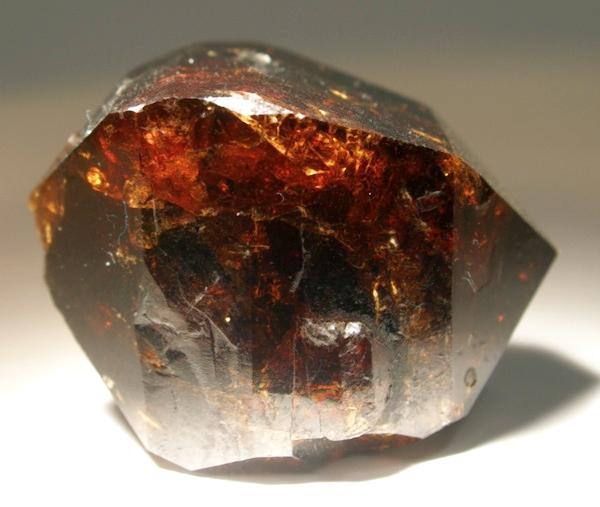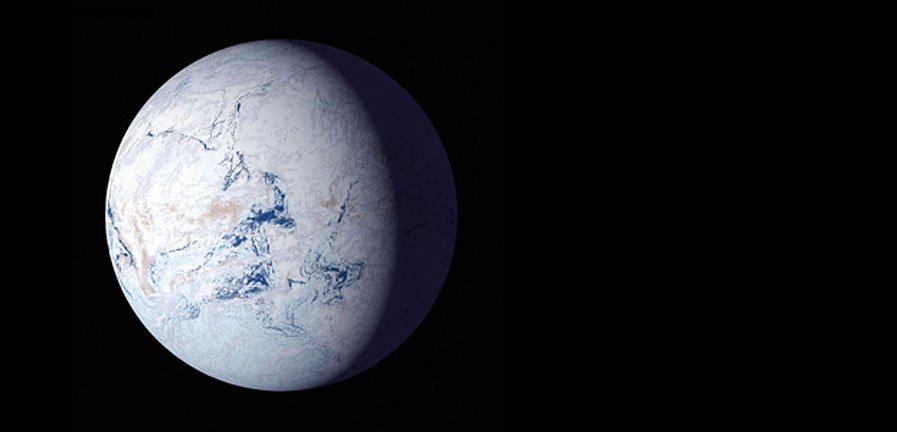5400 kilometers of vaporized ice: scientists have unearthed the mystery of the planet's oldest known crater
The Yarrabubba impact likely sent Earth's climate straight from the icehouse into the greenhouse
Low scrub stretched off into the distance on both sides of the dusty dirt track. Chris Kirkland, then a senior geologist at the Geological Survey of Western Australia, had driven this almost 200-km bleak stretch of nothingness between Sandstone and Meekatharra a dozen times or more. This time he was on his way back from collecting samples of ancient, crumbling granites. There’s not much out there. So when he saw the shotgun-holed sign for the Yarrabubba impact structure, it was a welcome rest stop. Yarrabubba isn’t much to look at. There is no crater to see, since it's buried under eons of sand. Out there in the blazing desert sun, all that’s left is an unassuming small hill. Kirkland collected some scrappy rocks that ended up in a drawer back in his Perth office. And there they stayed for a few years.

The Western Australian desert may not look remarkable, but it holds its own geological secrets
RenataWrightArt on Needpix
On a different hot and dusty afternoon, a few years later, Timmons Ericksen, a student of Nick Timms and Aaron Cavosie, all of Curtin University, pulled off on the same road at the same beaten up sign. He was passing through on his way to collect rocks for his PhD research and the Yarrabubba impact structure had caught his attention. Returning to Curtin, where Chris Kirkland was now a professor in geochronology, the four started talking. Timms, Cavosie, Ericksen, and Kirkland had all been poking around in the dust and rocks south of Meekatharra on and off for a few years now.
“It probably tells you something about the speed of science, right?” laughs Kirkland.
With world-class analytical instruments at their disposal, they decided to work together, combining their expertise in impact structures and dating minerals. They discovered, in work presented in Barcelona in late August, now published in Nature Communications, that Yarrabubba is the Earth’s oldest preserved impact crater. Not only that, but it is also tantalizingly coincident with dramatic changes in Earth's climate during the earliest stages of the development of life.
When Yarrabubba was first discovered, forty-one years ago, geologists recognized that the rocks there contained "shock deformed" minerals. Shock deformation happens when a meteorite hits the Earth at supersonic speed, leaving identifiable damage to the crystals that make up the rocks. Only meteorite impacts can do this. Later, geophysical surveying revealed the characteristic shape of a buried crater. The first attempt to date the impact gave an age of 1.13 billion years, but most researchers were pretty sure it was older. In 2002, geologists from Geoscience Australia, the country's national geological survey, published their study of the ancient granites throughout this region. Most of the granites were about 2.6 billion years old. But one single analysis of the many zircon crystals they analysed from Yarrabubba was about four hundred million years younger. Because it was an outlier, they ignored it. But the Curtin researchers wondered if the anomaly could it be related to the impact.
“That was a clue that this might be one of the oldest (craters) on Earth,” says Ericksen. “It definitely pointed us in the right direction.”
Getting a precise age for meteorite impacts is notoriously difficult. But by then Ericksen had almost completed his PhD on the microscopic and unusual structures and textures in minerals affected by impacts, and so was an expert on the topic.

Small pieces of zircon crystal were used to date the Yarrabubba impact
Robert M. Lavinsky on Wikimedia Commons
When he analyzed samples from Yarrabubba, he found textbook evidence of an impact. He and Kirkland identified small parts of zircon and monazite crystals – areas less than half the width of a human hair – that had melted during impact that could be used to date the impact.
The results left the researchers in awe. The impact-melted monazite crystals were 2.227 and 2.229 billion years old. And impact textures in zircons were 2.246 billion years old. The tightly matching ages were two hundred million years older than the next oldest impact crater.
“It was really exciting,” says Ericksen. “The nice thing was that we had two types of minerals that gave us the same age in different ways. So that made it the oldest precisely dated impact crater on Earth.”
“There is evidence for older impacts,” adds Kirkland, “but (in those cases) there’s no crater. This is the oldest dated crater.”
Kirkland was curious if the Yarrabubba impact might be related to other significant geological events. He started digging around to see what else had happened around the time of the impact.
“It was a weekend,” he says. “The first draft (of the paper) was done and everyone was pretty happy with it. I was messing around...and I thought 'Hold on a minute, I’ve seen an age that matches this.' I sent an email to Timmons and said, 'You do realize this age matches the end-Paleoproterozoic snowball deglaciation,' and he said, 'Oh wow, that could be quite significant!' and I said, 'Yeah, I think it probably is.'”
The age of the Yarrabubba impact coincided with the end of a runaway ice-age known as Paleoproterozoic snowball Earth. During snowball Earth periods, when the Earth is shrouded in ice, carbon dioxide released from volcanoes builds up in the atmosphere. Eventually, high carbon dioxide levels cause global warming, melting the ice, and surface waters flush carbon dioxide back into the oceans. Once the Earth is warm and enough carbon dioxide is returned to the ocean, the Earth cools again. It’s a slow, endless cycle – first tipping one way, then the other. But it doesn’t explain sudden climate changes, like the one we are experiencing today. Nor does it justify the sudden end to Paleoproterozoic snowball Earth 2.2 billion years ago.

Artist's rendering of what "Snowball Earth" may have looked like from outer space
So what would have happened, wondered the Curtin researchers, if a meteorite big enough to make a 70 km wide crater hit a surface covered in a thick ice sheet, as was probably the case when the Yarrabubba impact happened? They turned to Tom Davison from Imperial College London, who specializes in numerical modelling of impacts. The results were beyond their expectations.
Davison found that the impact would have produced a blanket of dust and rocks covering an area of ice about the size of New Jersey. The dark surface would have started melting the ice. On top of that, the massive amounts of water vapor – a greenhouse gas – created by the immediate impact would have had an even greater warming effect.
Davison calculated that up to 5400 cubic kilometres of ice would have instantaneously vaporized on impact. This represents a massive change, immediately sending Earth out of the icehouse and into the greenhouse.
The researchers now realized that the Yarrabubba impact event might have shifted the course of Earth's history, just as the massive impact 66 million years ago that killed the dinosaurs and scores of other species had. But while the end of Paleoproterozoic Snowball Earth correlates with the timing of the impact, direct evidence that the impact caused climate change remains to be found.
“While it might be just a coincidence, it’s certainly intriguing,” says Ericksen.
So perhaps Yarrabubba holds some secrets yet, hidden under a flat, seemingly endless landscape that probably looks much like it has done for the last two billion years. This raises an intriguing question: are there other, undiscovered impact craters out there?
"Yarrabubba is not giant," says Ericksen. "It’s a moderate-sized crater. It’s exciting that something that size can be preserved for that long. And maybe suggests that it’s worth going and looking at other old cratons that have been very stable for billions of years.”
[Editor's note: Chris Kirkland, an author on the Yarrabubba study, and Julie Hollis, author of this article, work together on a geochronology database for Greenland and other studies of Greenland's ancient rocks.]
Peer Commentary
Feedback and follow-up from other members of our community
Sahana Sitaraman
Neuroscience, Behavior
National Centre for Biological Sciences, India
It’s fascinating to see how far scientific techniques have come to enable us to probe events that happened billions of years ago and make solid conclusions. With absolutely no knowledge of geological sciences, I wanted to get a few things clarified. Is a “New Jersey” sized impact enough to cause a dramatic climactic shift in the atmosphere of the entire earth? And if yes, how long do scientists predict this would have taken, as compared to the normal cycle? And if this impact never happened, how would that affect the earth’s current state? Also, why was this research embargoed?
Sree Rama Chaitanya
Molecular Biology
This might be a daft question. I presume we have multiple ice-ages. So, what kind of events led to a drastic climatic change in other ice-ages? I am also curious about how the story continued. This is a modeling study based on geological evidence. What followed after that? Either way, a very exciting story probably capturing the timeline of a Ph.D. student.The last time I read a scientific story that spans many years was months ago (Jana Lewin’s Blackhole blues)